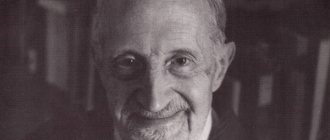What is attention? What is attention like?
The term attention is usually understood as the focus of human consciousness (or mental focus) on specific objects and phenomena that have situational or stable significance for a person. This concept also means concentration of consciousness, which implies a high degree of sensory, motor or intellectual activity.
Read also: Why do you need a clutch in a car?
Attention can be of several types: involuntary, voluntary and post-voluntary, with the first two being of particular interest.
Involuntary attention
Involuntary attention (also called emotional or passive) is the concentration of consciousness on some object, due to its characteristics. In this case, there is a dependence of attention on the object that attracts it, and the person himself lacks efforts aimed at concentration. And speaking about the emotional component, they highlight the connection between the object of attention and emotions, needs and interests. There is also no volitional effort aimed at concentration.
Any stimulus with varying degrees of impact can attract attention. When the stimulus is new, it also becomes the cause of involuntary attention. A person’s feelings – moral, aesthetic and intellectual – play a huge role in the appearance of involuntary attention. If, for example, an object causes delight or surprise, attention is drawn to it for a long time. And with interest, as with direct interest in something and as with a selective attitude towards reality, feelings are associated. For this reason, interest is recognized as the most important reason for long-term involuntary attention.
Focus
There are the following types of focus:
- "to myself";
- to the outside world;
- for one or many objects.
Attention is directed “inward” when a person meditates, solves a life problem, conducts an internal dialogue, and concentrates on sensations in the body.
Orientation to the outside world is associated with a person’s abilities, aspirations and attitudes. The seller directs his attention to communication with clients, people of technical professions - to various mechanisms. The focus of attention influences the choice of profession and success in it.
This function of attention is also associated with emotions and feelings. An interesting thing will “feed” attention. Attitudes too, regardless of what emotions are associated with them. For reference: attitudes are the significance attached to signals from the external world, i.e. information that “touches your heartstrings.”
Focus on one object is associated with stability and high concentration of attention, on several objects - with switchability and distribution. Teachers, drivers, pilots are forced to do several things at the same time, i.e. distribute attention to several objects. Scientists focus on solving the only pressing problem. Distribution is possible only if one of the activities is performed automatically.
Factors influencing direction:
- strength (intensity) of the stimulus;
- novelty, brightness;
- human condition;
- emotions, attitudes, abilities (refer to subjective factors).
Personal factors (character, upbringing) play a significant role.
Properties
It should be noted that these properties are characteristic of both types of human attention. Another name is attention mechanisms; five of them are known today:
- Sustainability of attention.
This is the maximum total length of time that an individual is able to devote to one object. - Attention span.
This characteristic of attention has an innate property, it is given to a person genetically, these are its physiological foundations. But with the help of training throughout your life, the level of available volume can be significantly increased.The volume of attention can be measured; this is the maximum number of objects or information on which a person can simultaneously concentrate without compromising the clarity of cognition for each of them. The average person is able to perceive 4-5 objects equally vividly, with a maximum of 7-9. Anything over nine is no longer perceived. Therefore, for productive work, many time managers recommend having no more than 7-9 stickers with task reminders in your field of vision at the same time - more of them will make the work ineffective.
- Distributability.
This is a certain number of actions that an individual can simultaneously carry out without prejudice to each of these actions.The attention structure of the average person is built in such a way that we can perform one or two actions at the same time without compromising their quality. Sometimes - three or four, if these actions are quite simple. For example, talking on the phone, stirring soup on the stove, gnawing on sunflower seeds and stroking the cat with your foot. These are four simultaneous actions that almost anyone can perform. But if these processes that require attention are complicated, then this will become impossible, since the physiological foundations of a person do not allow him to go beyond the provided functions. But they say that Caesar was able to perform 12 actions simultaneously with equal success. I wonder what those actions were.
How to train mindfulness
- confidence
This is your first task for today - just try to feel good out of the blue. Are your legs and arms in place? Great. Are your eyes intact, are your fingers writing? Amazing. Do you have a roof over your head and food in the refrigerator? Simply great! Now take a deep breath, exhale and feel like the most wealthy and promising person on the planet.
Now, when the sea is knee-deep and the mountains are shoulder-deep, you can brush aside worries, put aside irritation and happily immerse yourself in studying a topic or completing tasks - depending on what you do for a living or what you consider self-development.
At some point, you will catch yourself thinking that you are arranging complex categories into shelves in your head like a grandmaster. Even if you didn’t shine at the Olympics, increasing your attentiveness and, indirectly, your level of intelligence can be achieved through immersion and curiosity. There is a hypothesis that there are no lazy or narrow-minded people - there is an upbringing that does not instill an interest in new things. Here a person lies, chasing the same problems through the closed circuits of neural networks day after day.
Free e-book 23 working ways to make your marketing cooler, faster, more effective than now Get it for free
- reboot
Another way is not even an independent technique, but preparation for the formation of the desired mood and interest, which we talked about above. It's about meditation. This is a great way to shift attention and send unnecessary thoughts to the periphery.
It can be very strange to see caricatured models sitting in the lotus position, simulating meditation. You have to be a very enlightened guru so as not to be distracted by numb legs and numb arms, twisted in a special way to fit on your knees. Perhaps some of the readers have reached a similar level of development, but we will try to focus on a simpler and more numerous audience.
You shouldn’t look for any tricks or mysticism in meditation—it’s a simple technique for rebooting your attention. A position of maximum relaxation is ideal for her. Lying on your back, arms along the body or outstretched, legs straight. Some people like to put their hands behind their head. In modern yoga this is called Savasana or “corpse pose.” It is quite enough instead of twisting it into a pretzel and standing on your head.
Choose a time, preferably two hours in a row, during which no one will disturb you. Lie down, close your eyes and begin to catch the sensations of your body shutting down. It is on continuous relaxation that you need to concentrate. You just have to watch how your arms and legs become weightless, your senses stop capturing the outside world. Pay attention to your detachment and peculiar refusal to participate in the current moment, succumb to ease.
It's easy to fall asleep during the process, which is not a bad thing. In fact, this is a great way to switch off quickly. After a short sleep or deep meditation, you will see that the thoughts that were spinning in your head before have calmed down and become blurry. Catch the state of the empty vessel and quickly fill it with interest and working fuse.
Even with high concentration, it is difficult to keep all work tasks under control. Calltouch products automate your marketing processes so you can stay zen and not have a million things on your mind at once. Don't worry about collecting reports and effectively allocating your budget - Calltouch tools save you time and stress, increasing business profits.
Find out more
Surprisingly, through several layers of relaxation and distraction, the opposite is achieved - concentration and attention.
Now that you have learned to enter a state of immersion based on serenity and interest, it makes sense to talk about techniques for strengthening concentration skills. About what many people start ranting about right away.
– speed reading
Among the techniques for concentrating attention, it is especially worth highlighting something that is not directly related to the topic, but is closely related. This is a speed reading technique. Try to master this skill, and attentiveness will improve on its own, along with an excellent ability to cover huge layers of information many times faster than the vast majority of people.
Usually, speed reading training begins with Schulte tables. This is a rectangular table in which numbers are located in separate adjacent cells. They are not repeated, all numbers are different. Cells can be of different shapes and sizes. A person must consistently find numbers following each other in the natural series, without taking his eyes off the very middle of the table. That is, you need to see numbers in your peripheral vision. At first, everything will seem blurry, but then vision will acquire greater “scanning”.
It is useful to download an application for learning speed reading to your mobile phone. In it you will not only work with tables, but also step by step, using simple examples, you will learn to keep up with text that moves at an increasing speed. Exercises for quickly memorizing multi-digit numbers are also available. All of this is great training for attention.
Types of attention
Involuntary attention arises in response to a stimulus without the participation of our consciousness and will in choosing an object. For example, it could be a sudden sharp noise, an interesting picture, or something that we pay attention to out of habit due to occupational deformation or other features. Involuntary attention is spontaneous and unstable.
Voluntary attention appears as a result of a person’s volitional efforts. We consciously choose an object for attention and direct our focus to it. All development and growth of skills are associated with voluntary attention.
There is another type - post-voluntary attention . It occurs when we initially choose an object of attention, and after that we no longer need volitional efforts, or are needed to a much lesser extent, to maintain attention. It is maintained by itself due to interest or habit. You may start reading a book because you decide it needs to be read. Initially, it’s an effort of will to focus on the book, but in the process you get carried away and forget about everything else. Or you may become accustomed to paying attention or keeping it on what is important to you. Over time, maintaining the selected object will require much less effort. This is already an advanced skill.
All development and growth of skills are associated with voluntary attention.
How does our attention work?
The world around us is filled with information. The human psyche is structured in such a way that it is important for it to select only information that is relevant at the moment and structure it, otherwise we face complete disorientation. Attention acts as a “filter” for the correct functioning of memory and thinking. We also need to keep our attention on the current activity, communicate constructively with people around us, and be successful in completing our work.
The functions of attention help our conscious and subconscious minds cope with these tasks. What functions are we talking about?
Attention disorders
Attention disorders are understood as pathological changes in the direction, selectivity of mental activity, expressed in a state of fatigue or in organic brain lesions in: a) narrowing of the object of attention, when a person can simultaneously perceive only a small number of objects; b) instability of attention, when concentration of attention is impaired and observed his distractibility to side stimuli.
Attention disorders
1. Absent -mindedness is the inability of a person to concentrate on something specific for a long time. Absent-mindedness can act: a) as an inability to concentrate; b) as excessive concentration on one object of activity.
Imaginary absent-mindedness is a person’s inattention directly to surrounding objects and phenomena, caused by extreme concentration on a single object, subject, or experience. The result of great concentration and narrow attention. Inhibition occurs in all areas of the cerebral cortex, except one.
Genuine absent-mindedness is a weak intensity of attention and weaker switchability. A person has difficulty establishing and maintaining voluntary attention. To do this, he requires much more volitional effort than an ordinary person. Physiologically it is explained by insufficient strength of internal inhibition. The causes may be general nervous system disorder, anemia, fatigue, and improper daily routine.
There are scientific and senile absent-mindedness. Scientific absent-mindedness is a manifestation of very high concentration of attention in combination with its limited volume. Senile absent-mindedness is poor switching of attention combined with insufficiently active concentration (attention “sticks” to one subject).
Absent-mindedness often occurs with fatigue, with asthenic conditions and, as a rule, is combined with increased exhaustion of attention.
2. Mobility of attention is a constant transition from one object to another, from one activity to another with low efficiency of each.
3. Inertia of attention is a low mobility of attention, its pathological fixation on a limited range of ideas and thoughts.
4. Aprosexia is a complete lack of attention.
What is attention like?
Scientists count 9 types of attention, differing from each other in their functions:
- Direct - controlled not by will, but by the object to which it is chained. More precisely, the interest that it arouses in a person. If you like a film, you watch it in one sitting, you don’t need to be forced.
- Indirect – requiring special means (gestures, sounds, words). "Look at me!" - we say to another when we want to attract his attention.
- Voluntary attention - consciously directed according to set goals and objectives (often through “I don’t want, but I have to”). Cramming text that “doesn’t work”, monitoring one’s own speech in order to get rid of parasitic words, etc. This type is also called strong-willed or active, since one has to make certain efforts, ignoring the spontaneity of thinking. By suppressing the latter, we spend a lot of energy, so voluntary concentration can last about 20 minutes. Then the person will feel tired.
- Involuntary – passive, independent of will and consciousness. It exists as if by itself, always caused by stimuli from the external environment. As a rule, these stimuli are unusual for us: a sudden roar, an awkwardly dressed person, strange behavior of an animal, etc. What is familiar to you may not be noticed. Novelty always “catches” our eyes and ears – we involuntarily direct our attention to it.
- Post-voluntary – involuntary attention that becomes such after voluntary efforts. But unlike involuntary attention, as a separate type, here a person is driven by interest or need. For example, a child puts a lot of effort into learning to play the piano. After some time, he cannot be pulled away from the instrument: he can play a learned melody for hours, enjoying the process of playing.
- Natural is given to man from birth. We attract attention to everything that has the effect of informational novelty inside or outside us.
- Socially conditioned – formed as a result of educational and training processes.
- Sensual view – associated with the emotional sphere and sense organs. The focus is on the emotion or feeling.
- Intellectual – focusing on one’s own thoughts.
Voluntary, involuntary and post-voluntary are the “main” types of attention in psychology, since they are intertwined with the volitional sphere of a person.
Will (or lack thereof), in turn, is an important factor involved in setting and achieving goals, making decisions, organizing activities, etc.
Attention and its main characteristics, Theories of attention
- home
- State exam in the specialty Psychology of Personality (bachelor's degree)
- General psychology
->
->
Answer plan:
1) Concept of attention
2) Physiological basis of attention
3) Main types of attention
4) Basic properties of attention
5) Theories of attention
1) Attention is a cross-cutting mental process consisting in the selective focus of mental activity on an object. (according to N.F. Dobrynin) This is a cross-cutting process that gives a directed, selective character to the entire mental life. Direction is associated with the transition from one activity to another, and concentration is with depth in the lesson. Direction and concentration are closely related. One cannot exist without the other. When an individual directs his attention to something, he simultaneously focuses on it, and vice versa.
Attention takes part in the organization of all cognitive processes (sensation, perception, thinking), being an end-to-end mental process, and performs the following functions :
1) selection of significant stimuli and ignoring unimportant, side effects;
2) retention, preservation of the required activity (or image) until the goal is achieved;
3) regulation and control of activities.
Thus, attention can be considered:
· as a process (sensory, perceptual);
· as a state (concentration);
· as a personality trait (observation).
2) Physiological basis of attention
The physiological basis of attention is the general activation of the brain associated with the activity of the reticular formation. There are several stages or levels of brain activity that provide attention to varying degrees. The most important basis of attention is the achievement of a certain functional state of the brain.
Attention consists of the reaction of orientation to some stimulus or object. In order for an event to be perceived, it must be able to evoke an indicative reaction that will allow us to “tune” our senses to it. Those. attention is reflexive in nature and arises as a result of a special orienting reflex.
The central mechanisms of attention are associated with the excitation of some nerve centers and inhibition of others. In N.S. Some of the emerging excitations turn out to be so strong that they act as dominant ones, suppressing all others. This main excitation is usually called the dominant; all other foci in the nervous system are subdominants. Thus, the most important mechanism ensuring attention is the dominant mechanism, discovered by A.A. Ukhtomsky.
A dominant is a temporarily dominant focus of excitation in the cortex, which inhibits the work of other nerve centers.
3) Main types of attention
The direction and concentration of mental activity can be involuntary or voluntary. In this regard, three types of attention are distinguished: 1) Involuntary - for novelty, sharpness, contrast, significance. It originates from the orientation reflex and is maintained regardless of human consciousness.
2) Voluntary - direction in accordance with the task, controlled consciously, closely related to the will of a person. The main function is the active regulation of the flow of mental processes.
3) Post-voluntary - similar to voluntary, it is purposeful in nature and initially requires volitional efforts, but then the person enters into work: the content and process of the activity, and not just its result, become interesting and significant. Unlike involuntary attention, postvoluntary attention remains associated with conscious goals and is supported by conscious interests. At the same time, unlike voluntary attention, there is no or almost no volitional effort.
4) Basic properties of attention
Selectivity of attention - the ability to select significant stimuli and ignore unimportant ones.
Concentration is the degree or intensity of focused attention.
The volume of attention is the number of impressions that can be perceived with complete clarity and distinctness in one act of attention.
Distribution of attention is a person’s ability to perform several types of activities simultaneously.
Switchability is a conscious and meaningful movement of attention from one object to another.
Stability of attention - the ability to focus on the same object for a certain time
5) Theories of attention
Motor theory of attention N.N. Lange associated attention with the regulation of ideomotor movements, which are carried out during the perception and representation of objects. Attention is the dominance of a given representation at a given moment in time: it is subjective, i.e. for the conscious subject himself, it means to be attentive, to be focused on this impression.
Theory of attention by T. Ribot Attention is always associated with emotions and is caused by them. close relationship between emotions and voluntary attention. The intensity and duration of attention are directly determined by the intensity and duration of the emotional states associated with the object of attention.
Theoretical concept of attention P.Ya. Galperin 1) Attention is a moment of orientation-research activity and psychological action aimed at the content of an image, a thought currently present in the human psyche;
2) the function of attention is control over this content
3) the activity of control, attention does not have a separate special result
4) all specific acts of attention - both voluntary and involuntary - are the result of the formation of new mental actions.
The theory of installation by D. N. Uznadze
Set theory concerns a special kind of pre-tuning state that, under the influence of experience, arises in the body and determines its reactions to subsequent influences.
ADDITIONAL MATERIAL to QUESTION 10. Placed in accordance with the plan item
2) Dominant – a temporarily dominant focus of excitation in the cortex, which inhibits the work of other nerve centers. The dominant (dominant) focus of excitation at a given moment in time, ensuring the performance of any activity, attracts excitation from other centers and simultaneously suppresses them, which blocks extraneous stimuli not related to the activity being performed, and, at the same time, enhances energy excitation of the main dominant focus. The dominant is a stable source of excitement; thanks to it, conditions are created for high concentration and long-term focus. Thus, a person who is passionate about work does not notice hunger, extraneous noises, or the voices of other people.
3) INVOLUTIONARY ATTENTION is the simplest type of attention. It is often called passive, or forced, since it arises and is maintained independently of a person’s consciousness. An activity captivates a person by itself, due to its fascination, entertainment or surprise. The complex of occurrence of involuntary attention includes various physical, psychophysiological and mental reasons. They are interrelated with each other, but they can be roughly divided into the following four categories.
The first group of reasons is related to the nature of the external stimulus, which includes, first of all, the strength (sharpness) or intensity of the stimulus . The contrast between stimuli is also important . Attention is drawn to impressions that differ from the background surrounding them. This group of reasons should also include such quality of the stimulus as its novelty and unusualness . In other words, the more novelty there is in an object, the more complex and interesting it is, the stronger the stimulus and the more often it is repeated, the easier it can attract attention. Thus, the first group of reasons includes the characteristics of the stimulus affecting a person.
The second group of reasons that cause involuntary attention is associated with the correspondence of external stimuli to the internal state of a person and, above all, to his needs. Attention is attracted to everything that more or less corresponds to the ideas or thoughts present in his mind at the present moment.
The third group of reasons is related to the general orientation of the individual . An important role is played by a person’s spiritual needs, interests and expectations. Attracts attention to everything that interests the most and that constitutes the sphere of stable interests, including professional ones. Consequently, the general orientation of the individual, the nature of interests and the presence of previous experience directly affect the occurrence of involuntary attention.
Fourth group. As the fourth independent group of reasons that cause involuntary attention, we should name those feelings that the influencing stimulus causes in us. What causes an emotional reaction is the most important cause of involuntary attention. For example, when reading an interesting book, a person is completely focused on perceiving its content and does not pay attention to what is happening around him.
Unlike involuntary attention, the main feature of VOLUNTARY ATTENTION is that it is controlled by a conscious goal. This type of attention is closely related to the will of a person and was developed as a result of labor efforts, therefore it is also called volitional, active, intentional. The main function of voluntary attention is the active regulation of mental processes.
Both types of attention are closely related to each other, since voluntary attention arose from involuntary attention.
POST-VOLUNTARY ATTENTION , like voluntary attention, is purposeful in nature and initially requires volitional efforts, but then the person gets into the work: the content and process of the activity, and not just its result, become interesting and significant. Unlike involuntary attention, postvoluntary attention remains associated with conscious goals and is supported by conscious interests. At the same time, unlike voluntary attention, there is no or almost no volitional effort.
4) Selectivity of attention consists in the ability to select significant stimuli and ignore secondary ones. Through headphones, two magnetic recordings were simultaneously fed into both ears of the subject. When the subject was asked to listen carefully to one of them, the subject easily repeated the words he heard. But he caught almost nothing from the other recording. It seems that there is a “filter” in the brain that limits the ability to capture signals coming from different sources. However, it was found that this filter does not always work flawlessly. Thus, in auditory perception, it is enough that a particularly important word for him, for example, his name, is spoken into the subject’s other ear for him to automatically change the channel of perception. This limitation of attentional capabilities also manifests itself when the auditory and visual systems operate simultaneously. For example, during a lecture, a student can read an interesting book. However, even if his attention jumps from one channel to another, it is unlikely that he will be able to well understand at least what is being transmitted through one of them, much less both.
Concentration of attention means that there is a focus in which all mental or conscious activity is concentrated. Concentration refers to the degree or intensity of focused attention. Concentration is a consequence of excitation in the dominant focus with simultaneous inhibition of other areas of the cerebral cortex.
Volume. Attention can be characterized in terms of its volume. In psychology, the volume of attention is understood as the number of impressions that can be perceived with complete clarity and distinctness in one act of attention.
According to V. Wundt’s calculations, human consciousness can simultaneously embrace from 16 to 40 simple impressions, while attention can prepare the body to react simultaneously to a much smaller number of impressions - from 6 to 12 - of the same nature. This makes its selective nature completely clear.
Attention span is a variable that varies individually, but usually its indicator in people is 5+2. The volume of attention is a variable value, depending on how connected the content on which attention is focused, and on the ability to meaningfully connect and structure the material.
Distribution of attention is a person’s ability to perform several types of activities simultaneously. For example, simultaneously remembering a poem out loud and making calculations in writing. A textbook example is the phenomenal abilities of Julius Caesar, who, according to legend, could simultaneously do seven unrelated things. It is also known that Napoleon could simultaneously dictate seven important diplomatic documents to his secretaries. It is likely that in this case several things are not being done entirely simultaneously: most likely, there is a very rapid alternation of attention from one to another. Even W. Wundt proved that a person cannot concentrate on two simultaneously presented stimuli. However, sometimes a person is actually able to perform two types of activities at the same time: in cases where one of the types of activities performed is completely automated and does not require attention (for example, ironing and watching TV, embroidery and conversation). If this condition is not met, combining activities is impossible.
As a rule, there is an inverse relationship between the distribution of attention and its intensity: the greater the number of objects that are given attention at the same time, the less attention there is for each individual object.
It should be noted that greater or lesser ability to distribute attention is essential for success in a particular profession. Some activities require greater distribution of attention, while others, on the contrary, can be successfully performed by persons with a weak ability to distribute.
Many authors believe that the distribution of attention is the reverse side of its other property - switchability.
Switchability is a conscious and meaningful movement of attention from one object to another. The ability to switch means flexibility of attention, the ability to quickly navigate a complex, changing situation. The ease of switching attention varies from person to person and depends on a number of conditions (primarily on the relationship between previous and subsequent activities and the subject’s attitude towards each of them). The more interesting the activity, the easier it is to switch to it. A certain role in the speed of switching is also played by the individual characteristics of the individual, in particular, his temperament. It should be noted that switching attention is one of the well-trained qualities.
Absent-mindedness, in the everyday sense of the word, is essentially poor switchability.
Sustainability of attention is the ability to focus on the same object for a certain time.
Experimental research has shown that attention is primarily subject to periodic involuntary fluctuations. Periods of fluctuations in attention (according to N. Lange) are usually 2–3 seconds, reaching a maximum of 12 seconds. These cases of fluctuations, according to many researchers, are directly related to fatigue and adaptation of the sensory organs. Attention left to itself reveals a natural tendency to move from one new impression to another. As soon as its object loses its interest, without delivering any new impressions, attention, against our will, moves to something else.
In addition, the stability of attention depends on a number of conditions. These include: the characteristics of the material, the degree of its difficulty, understandability, the individual’s attitude towards it - the degree of his interest in this material - and, finally, the individual characteristics of the individual.
Thus, attention is a manifestation of the selective orientation of mental activity, an expression of the selective nature of the processes of consciousness. Attention is inextricably linked with all aspects of the psyche. In particular, the role of emotional factors is clearly reflected in the dependence of attention on interest, the role of the will finds direct expression in the fact of voluntary attention.
5) In psychology, there are six main approaches that explain the phenomenon of attention. Each of them considers one aspect to be the main one in the complex complex of human mental activity, but so far none of these hypotheses has received universal recognition. It is possible that the true mechanisms of attention are either a form of integration of the processes described below, or are due to other reasons. The first, emotional, approach to understanding attention was promoted by T. Ribot, who believed that attention is always associated with emotions and is caused by them. Ribot believed that the intensity and duration of voluntary attention is determined by the characteristics of those emotions that are caused by the object of attention. This view of attention is very legitimate, because emotion is the body’s reaction to the likelihood of satisfying an actual need, and the body’s attention is primarily focused on such objects.
The second approach was put forward by scientists I. Herbert and W. Hamilton, who believed that more intense ideas suppress less intense ones, displacing them into the area of the subconscious, and what remains in consciousness and attracts our attention.
The third approach is that attention is interpreted as the result of apperception, that is, the individual’s life experience. At the same time, incoming information is filtered in the nervous system, based on the needs, knowledge and life experience of a person.
The fourth approach was developed by the Georgian scientist D.N. Uznadze, who argued that the attitude internally expresses the state of attention. Uznadze called the process of isolating a certain image under the influence of an attitude from the entire variety of surrounding objects “objectification.”
The fifth approach emphasizes the motor aspect of the attention process. The fact is that involuntary attention is based on an orienting reflex - turning the body to a new source of irritation and adjusting the analyzers to it. These phenomena occur with the active participation of muscles, so attention can be interpreted as a specially organized motor adaptation to the environment.
The sixth approach comes from the physiological concept of attention as a complexly organized focus of excitation in the cerebral cortex, which suppresses the activity of neighboring areas of the brain. Currently, physiologists believe that such a hypothesis interprets the process of attention too primitively, since when concentrating attention very often not only individual areas of the cortex are involved, but the entire brain as a whole.
Motor theory of attention N.N. Lange
A significant contribution to the development of ideas about attention was made by the Russian psychologist N.N. Lange, who developed the theory of volitional attention. Like the French psychologist T. Ribot, he associated attention with the regulation of ideomotor movements, which are carried out during the perception and representation of objects. According to N. Lange, attention is precisely nothing more than the relative dominance of a given representation at a given moment in time: subjectively, i.e. for the conscious subject himself, it means to be attentive, to be focused on this impression.
N.N. Lange, analyzing the most well-known approaches to understanding the nature of attention, combines existing theories and concepts of attention into several groups:
- Understanding as a result of motor adaptation. Adherents of this approach proceed from the fact that since a person can voluntarily transfer attention from one object to another, attention is impossible without muscle movements. It is muscle movements that ensure the adaptation of the senses to the conditions of best perception.
- Attention as a result of limited volume of consciousness. Without explaining what is meant by the volume of consciousness, I. Gerberg and W. Hamilton believe that more intense ideas are able to displace or suppress less intense ones.
- Attention as a result of emotion. This theory received the greatest recognition in English associative psychology. It is based on the statement that attention depends on the emotional coloring of the representation. For example, the statement of the representative of this point of view, J. Mile, is quite well known: “To have a pleasant or painful feeling or idea and to be attentive to them is one and the same thing.”
- Attention as a result of apperception, i.e. as a result of the individual's life experiences.
- Attention as a special active ability of the spirit. Proponents of this position take into account a primary and active ability, the origin of which is inexplicable.
- Attention as an increase in nervous irritability. According to this hypothesis, attention is caused by an increase in local irritability of the central nervous system.
- The theory of nervous suppression attempts to explain the basic fact of attention - the predominance of one idea over another - by the fact that one physiological nervous process, the result of which is the fact of a special concentration of consciousness.
T. Ribot's theory of attention
One of the most famous psychological theories of attention was proposed by T. Ribot. He believed that attention, regardless of whether it is weakened or enhanced, is always associated with emotions and is caused by them. Ribot assumed a particularly close relationship between emotions and voluntary attention. He believed that the intensity and duration of such attention are directly determined by the intensity and duration of the emotional states associated with the object of attention.
Involuntary attention also depends entirely on affective states. “Cases of deep and persistent involuntary attention show all the signs of an indefatigable passion, constantly renewed and constantly thirsting for gratification.” The state of attention is always accompanied not only by emotional experiences, but also by certain changes in the physical and physiological state of the body. Only on the basis of a detailed and thorough study of such states can one get a clear idea of the mechanisms of attention.
T. Ribot emphasized the importance of physiological connections between mental processes and states, and this circumstance affected his interpretation of attention. Thus, Ribot's theory can be called psychophysiological. Attention, as a purely physiological state, has a complex of vascular, respiratory, motor and other voluntary or involuntary reactions.
Intellectual attention increases blood circulation in the organs of the body engaged in thinking. States of concentrated attention are also accompanied by movements of all parts of the body: face, torso, limbs, which, together with the organic reactions themselves, act as a necessary condition for maintaining attention at the proper level.
Movement, according to T. Ribot, physiologically supports and enhances this state of consciousness. For the senses (vision and hearing), attention means focusing and delaying movements associated with their adjustment and control.
The effort we put into focusing and maintaining attention on something always has a physical basis. It corresponds to a feeling of muscle tension, and subsequent distractions are associated, as a rule, with muscle fatigue in the corresponding motor parts of the receptive systems.
T. Ribot believed that the motor effect of attention is that some sensations, thoughts, and memories receive special intensity and clarity compared to others because all motor activity is focused on them.
The secret of voluntary attention lies in the ability to control movements. By voluntarily restoring movements associated with something, we thereby draw our attention to it. These are the characteristic features of the motor theory of attention proposed by T. Ribot.
Theoretical concept of attention P.Ya. Galperin
Among domestic psychologists P.Ya. Halperin put forward an original interpretation of attention. The main provisions of his concept are as follows:
1) attention is one of the moments of orientation-research activity and is a psychological action aimed at the content of an image, thought, or other phenomenon currently present in the human psyche;
2) in its function, attention represents control over this content. Every human action has an orienting, performing and control part. The latter is represented by attention as such;
3) unlike actions aimed at producing a specific product, control activities, or attention, do not have a separate special result;
4) from the point of view of attention, as an activity of mental control, all specific acts of attention - both voluntary and involuntary - are the result of the formation of new mental actions.
The theory of installation by D. N. Uznadze
It may be worth considering a theory that links attention to the concept of attitude. The theory of installation was proposed by D.N. Uznadze and initially concerned a special kind of state of preliminary adjustment, which, under the influence of experience, arises in the body and determines its reactions to subsequent influences.
For example, if a person is given two objects of equal volume, but different in weight, then he will estimate the weight of other identical objects differently. The one that ends up in the hand that previously held the lighter object will this time seem heavier, and vice versa, although the two new objects will actually be identical in all respects. They say that a person who discovers such an illusion has formed a certain attitude towards the perception of the weight of objects.
The attitude, according to D. N. Uznadze, is directly related to attention. Internally, it expresses the state of a person’s attention. This explains, in particular, why, in conditions of impulsive behavior associated with a lack of attention, a person, nevertheless, can experience very specific mental states, feelings, thoughts, and images.
The concept of objectification is also associated with the concept of attitude in Uznadze’s theory. It is interpreted as the selection, under the influence of an attitude, of a certain image or impression received during the perception of the surrounding reality. This image, or impression, becomes the object of attention (hence the name “objectification”).
Theory of attention L.S. Vygotsky
L.S. tried to trace the history of the development of attention, as well as many other mental functions. Vygotsky. He wrote that the history of a child’s attention is the history of the development of the organization of his behavior, that the key to the genetic understanding of attention should be sought not inside, but outside the child’s personality. Voluntary attention arises from the fact that people around the child “begin, with the help of a number of stimuli and means, to direct the child’s attention, direct his attention, subordinate him to their power, and thereby give into the child’s hands those means with the help of which he subsequently masters his own attention.” " The cultural development of attention lies in the fact that, with the help of an adult, the child learns a number of artificial stimuli-means (signs), through which he further directs his own behavior and attention. With age, the child’s attention improves, but the development of externally mediated attention proceeds much faster than its development as a whole, especially natural attention. At the same time, at school age, a turning point in development occurs, which is characterized by the fact that initially externally mediated attention gradually turns into internally mediated, and over time, this latter form of attention probably takes the main place among all its types.
Differences in the characteristics of voluntary and involuntary attention increase starting from preschool age and reach a maximum at school age, and then again show a tendency to equalize. This tendency is precisely due to the fact that in the process of its development, the system of actions that ensure voluntary attention gradually turns from external to internal.
L.S. Vygotsky writes that from the very first days of a child’s life, the development of his attention occurs in an environment that includes the so-called double series of stimuli that evoke attention. The first row is the surrounding objects themselves, which with their bright, unusual properties attract the child’s attention. On the other hand, this is the speech of an adult, the words he pronounces, which initially act as stimulus-instructions that direct the child’s involuntary attention. Thus, from the first days of a child’s life, a significant part of his attention is directed with the help of stimulus words.
Along with the gradual mastery of active speech, the child begins to control the primary process of his own attention, first in relation to other people, orienting their own attention with the word addressed to them in the right direction, and then in relation to himself.
The general sequence of cultural development of attention according to L.S. Vygotsky is as follows: “First, people act towards the child, then he himself interacts with others, finally, he begins to act on others and only in the end begins to act on himself... First, the adult directs his attention with words to the things around him and thus develops powerful stimulus-instructions from words; then the child begins to actively participate in this direction and begins to use words and sounds as a means of direction, that is, to draw the attention of adults to the object of interest to him.”
The word that an adult uses when addressing a child appears initially as a pointer, highlighting for the child certain signs in an object, drawing his attention to these signs.
During learning, the word is more and more directed towards highlighting abstract relationships and leads to the formation of abstract concepts. L.S. Vygotsky believed that the use of language as a means of directing attention and a pointer to the formation of ideas is of great importance for pedagogy, since with the help of words the child enters the sphere of interpersonal communication, where space opens up for personal development. Initially, the processes of voluntary attention directed by the speech of an adult are, for the child, processes of external discipline rather than self-regulation. Gradually, using the same means of mastering attention in relation to himself, the child moves on to self-control of behavior, i.e. to voluntary attention. Arthur Minimulin










